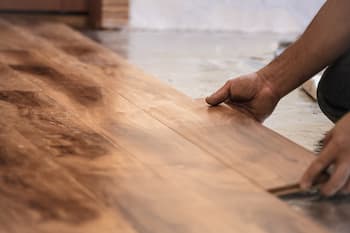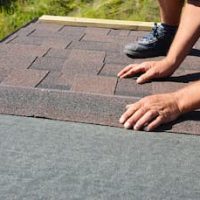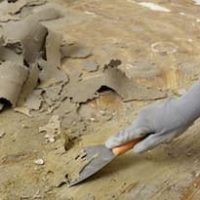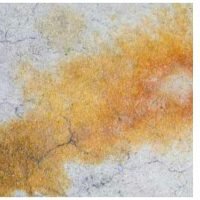Hardwood flooring is one of the most common floors due to its natural beauty. It adds an attractive look to any place. The use and demand for wood floors are increasing day by day with long-lasting features.
Now, most of the people want to know that,
How to remove hardwood flooring for reuse?
The long-lasting floors only need small maintenance and regular cleaning. It goes for years. You only remove it when you want to repair the house floor or want to change the style.
Can Old Engineered Hardwood Flooring Reuse?
Yes,
You can reuse the flooring by removing carefully by avoiding any damage. The floors never are ruins easily. So, instead of wasting the wood, you can re-apply it. It saves both money and wood.
You also reuse for other different purposes like some decorative corners, tables, cabinets, chairs, etc. There are many types of flooring like laminate, vinyl, parquet, salvaging, and lumber.
1. Bostitch Flooring Nailer Review
It is one of the best options for the removal of adhesive, damage, and new flooring for reuse. The simple and high-quality comfortable long handle is available for hard grip. The nailer is well suitable for tile, salvage, laminate, vinyl, parquet, and other original flooring planks.
Furthermore, they also remove concrete and linoleum with underlayment. The underlayments remove excess moisture and mold to protect the flooring.
Pros of Bostitch
- Remove all strips
- Low cost
- Do not leave minor scratch
- Do not require extra blade
- For installing and replace
Cons of Bostitch
- No complaint was found
The product rating is 4.8 out of 5
What Is the Best Floor Removing Method?
If you want to reuse the old hardwood flooring, try the best-removing solution and remove it carefully. You need to be very careful when planning to remove the flooring.
Basic and traditional steps or ways to start the working
- Before beginning any project, first, guarantee that the materials you want are finished. For pulling up flooring, a hammer, pry bar, and hook are a few trim devices that will ensure a more straightforward and speedier work of hauling up the hardwood piece from the underside of the floor.
- It’s additionally critical to set up the right place or location where the floor materials will be taken out. Clean up the point and get out every one of the installations on the walls to keep any flotsam and jetsam from harming them. Cover the things with canvases to save them from dirt while working.
- At first, use a pry bar to remove the possible baseboards without any plank damage. Whenever eliminated cautiously, these materials can likewise be reused.
- When you pull the baseboards, it’s one of the best options to pry up the uncovered tongues and get groove floating hardwood row boards.
- Track down a section close to the nail of the planks and gently slip the pry bar under the board before hoisting it. Make sure to do this cautiously because the tongue or the board can part if powerfully eliminated.
- However, to loosen the existing flooring, rock the pry bar. Rehash this great process until every one of the sheets or boards is securely lifted.
- Since the floors are gotten on the floor with nails, there will be metal garbage on the sheets. It’s more straightforward to gather them utilizing a handheld magnet.
- Before introducing the recovered wood to another area, extremely ensure that every one of the wanderer’s nails and staples was taken out first with care.
How Reusing Is Beneficial?
Reusing hardwood floors is a typical practice because these materials are sufficiently strong to be reused subsequently to building destruction. The following are four justifications for why it’s smarter to pick recovered hardwood as opposed to purchasing new ground surface materials:
Better Esthetics
Hundreds of homeowners love the peasant and smooth look of the flooring. This appearance just upgraded with the time, which is the reason it’s smarter to utilize recovered wood from an old house or an animal dwelling-place. Many subfloor materials try to copy the style, but these are not good and original.
Profoundly Durable
Hardwood is regularly produced using old trees. These trees developed for a very long period before base reaping, which permitted their wood to become more enthusiastically and denser. Wood items from these trees are exceptionally tough and scratch-safe.
Lower Costs
People spent a huge amount of money simply on new solid hardwood. So, reusing is highly effective and the best option to keep the money. Since they don’t go through similar cycles as fresh out of the plastic new hardwood, it’s most certainly less expensive to purchase a couple of instruments to pry up the hardwood floor baseboards in the home and repurpose them in another flooring place.
Climate Friendly
Although trees are inexhaustible assets, it requires quite a long while to supplant a tree that has been utilized for ground surface and different purposes. Recovered wood doesn’t need cutting down new trees, So it won’t hurt the climate. Reusing hardwood boards flooring, even aids in reducing the wood squander in the landfills.
How To Remove Hardwood Flooring For Reuse-Final Thoughts
If you want to remove the floor for reuse, you also need best-removing tips to turn the floor able to be reused. Hauling up the baseboard’s tongue is not easy. Remove the laminate floors, vinyl flooring carefully.
Use a professional nailer to remove the wood floor and the floorboards. Reuse the floor for many benefits like it avoids wastage of wood and money. After removing the floors, trim in possible sizes to use according to needs.
A pry bar is used to remove and pull up the subfloor and floor together. If you remove or pulled the floor with good cautiousness, you can reuse it for different purposes. According to a US company, almost six million pieces of wood are wasted. So, try to remove floors carefully because plain removing makes the floor able to remove and reuse.
Hope so, you all know about How to remove hardwood flooring for reuse.
Contents






